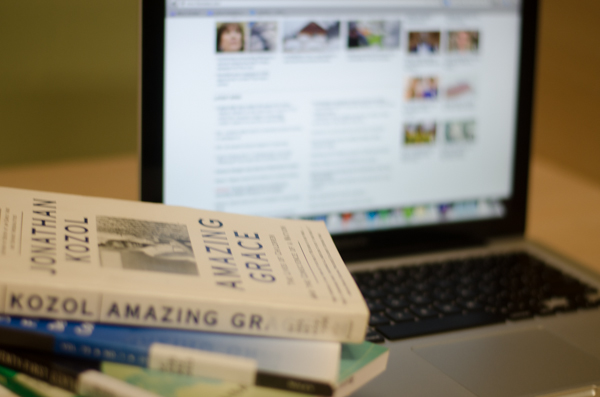Photo by: Will Gentry
Skimmers and scanners, people who quickly browse online headlines or paragraphs, are having increased trouble reading longer materials like novels, researchers say.
Cognitive neuroscientists at Tuft University are examining the emerging differences between online and print reading, according to the Boston Globe’s article, “Online skimming habits alter print-reading abilities.” Comprehension seems to be better with paper, and they continue to discover what these differences could mean for understanding difficult material at work and school.
Professor of Language and Literature Willie Steele said scanning could make the reader think he or she is getting all the information – the reality, however, is many important details are often lost.
“With online articles it can be especially problematic, as readers will quickly scan, looking for anything that is in bold type or has a hyperlink to it,” Steele said. “The most important issue to me is that this carries over to the classroom when students skim texts, not taking time to actually read and process what is on the page.”
Senior Emily Calvert considers herself a combination reader; her reading habits change depending on what she is reading.
“As an English major I feel that I do often use novel reading style for classes, but when I’m reading for pleasure or a less essential assignment, I do usually scan,” Calvert said.
Some researchers state that for many people, this style of reading is beginning to merge into other mediums as well. Steele sees the problem residing not only with students, but also the general population.
“So many people are used to sound bites on the news, short online articles, 140 characters on Twitter, and brief updates on Twitter that we expect the same types of quick fixes from all texts,” Steele said. “You can look at the way broadcast and print journalism has changed over the years. News has become shorter, not requiring the audience to actually think and process information on their own. Now, we expect others to do it for us.”
Calvert considers the Tuft research accurate, and notes herself and her peers as having adopted more and more of the scanning method as their college careers progress.
“In my own experience, I feel that I have become much more likely to use the scanning method since coming to college,” Calvert said. “… I think most people I know have had a similar experience.”
Steele notes that reading the full text intentionally rather than scanning helps to actually process the information as it was written, working to improve critical thinking. He also said that scanning is more often than not a dead end, as it lulls readers into a false sense of understanding the material.
“Even if you don’t understand the text the first time through, you have made an effort to work through the text instead of just skimming for important words, phrases or names,” Steele said. “Those who take the time – and it is more time consuming than scanning, to read the entire text – will find themselves understanding the material on a much deeper level than they would otherwise. This often leads to more questions being asked, which leads to more research and reading.”
Calvert states that time constraints and stress play a large role in the scanning method.
“Sitting down to truly focus on a novel read can be difficult when feeling pressured to finish quickly and move on to other tasks,” Calvert said. “Reading long text allows us to fully engage in and respond to the author’s argument or thought, while scanning encourages us to only grasp what we feel we absolutely need to know in each reading situation.”
A 2012 Israeli study of engineering students – who grew up in the world of screens – looked at their comprehension while reading the same text on screen and in print when under time pressure to complete the task. The students believed they did better on screen, when actually their comprehension and learning proved better on paper.
Researchers say that the differences between text and screen reading should be studied more thoroughly and that the differences should be dealt with in education, particularly with school-aged children. There are advantages to both ways of reading however, such as potential for a bi-literate brain.
Steele emphasized that scanning is something people need to realize they should avoid.
“A close reading takes more time, and many people today think they are busier than they actually are, allowing them to justify simply skimming the surface of a text,” Steele said. “If you look at how much time is wasted each day, you could find the time to read well. I don’t know about you, but I don’t want to have knee surgery done by the doctor who skimmed his or her anatomy textbook. I don’t want my brakes fixed by the mechanic who skimmed his or her manual looking for important words.”
Calvert asserted that scanning has changed our focus in reading – from appreciating the art and argument of the author, to a more self-absorbed search for only keywords relevant to our situation.












Be First to Comment